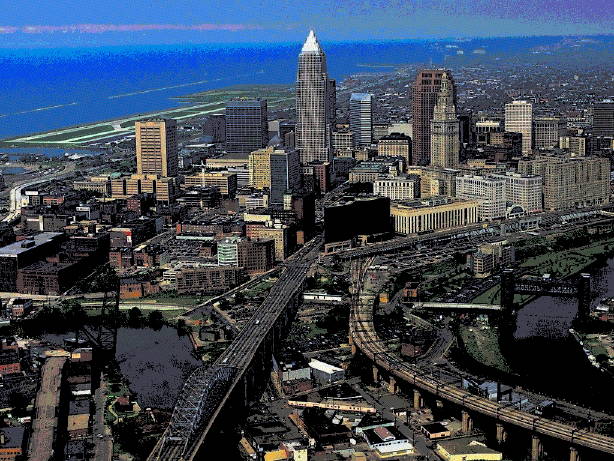
The election September 7, in northeastern Ohio, “NEO,” marked a dramatic turning point in the region’s model for self-governance. A new county charter was passed in 2009. It was a rush job, and its opponents either argued to retain the current, corruptable, structure, or, study the issue of optimizing county governance longer. Ironically, a prominent exponent from the latter group, Ed Fitzgerald, won the Democratic slot for county executive.
The new set up is an experiment. How many Cuyahoga County residents voted to bring their candidates to the final round in November? …something like 17%.

src: Visualizing the Invisible. towards an urban space (Read & Pinilo, eds.)
One of the ways I enjoy myself is to drive around Cleveland, sometimes get out and walk around, stick my noise in an unobtrusive way in the various neighborhood, especially those of Cleveland proper. I was raised on Cleveland suburban east side. After living 18 years elsewhere, I came back for good in 1992. One of the first things I took up upon my return was visiting all the local libraries. Cuyahoga County is home to two of the country’s largest library systems, and, one of its best single suburban libraries, (in Lakewood.) So, I got around. For the first time in my life, upon coming back, I acquainted myself–deeply–with the “lay of the land.” I dug into the history. (There’s an excellent compendium of historical and biographic articles about Cleveland too. I read the hardback, but the materials are online.) Later, between 2004 and 2006, with Ken Warren and others in Lakewood mentoring me on new ways to look at the urban space, I became a student of the, (if you will,) the grain of the city.
When I wander around residential neighborhoods, one question dominates: ‘What do the folks who live here do for a living?’ This is directed at the individual houses. In each house lives people, so what do they do? Garage sale season is petering out, yet the garage sales provide a good opportunity to learn a little bit about what people do.
I mention this because, for me, a city is a place where people, in effect, live to be able to do.
My usual soft response to reading the bright ideas for development promoted by candidates and institutions is to wonder if the authors have any reasonable ideas about what is the current baseline. In other words, do they have any idea what people are currently living to do? Here?

Cleveland has been de-industrializing for fifty+ years. I listened to the two city club debates, one for each party. It was depressing. I didn’t expect any of the candidates to speak directly to the causes of the region’s predicament. I’m not even confident the ambitious men and women know much about those causes. One thing I feel is that the corrupt spoils system is the tip of the iceberg of a legitimized spoils systems, and, this was the result of failed neo-liberal experiments promoted over decades by lots of big fishes swimming in the shrinking pond.
The situation is nowadays straight-forward: what do you do when you know your region is going to keep on shrinking? One thing is, you can figure out how to do so humanely, if not elegantly. For example, if you acknowledge this fundamental fact, then you have a lot of houses to tear down and a lot of parks and urban farms to build. Example: the transportation infrastructure is no longer commensurate with the current dynamics.
“Part of what you have to do is think about ways to use land that help improve the quality of life but don’t involve actual building.” Alan Mallach, an urban planning expert at the Brookings Institution, How to shrink a city. Not every great metropolis is going to make a comeback. Planners consider some radical ways to embrace decline.
The sting in history’s tail is the profound unreliability of the past as a test for the future. “Trauma” via Post-traumatic.urbanism.com
See also:
Urban Plight: Vanishing Upward Mobility – Joel Kotkin
